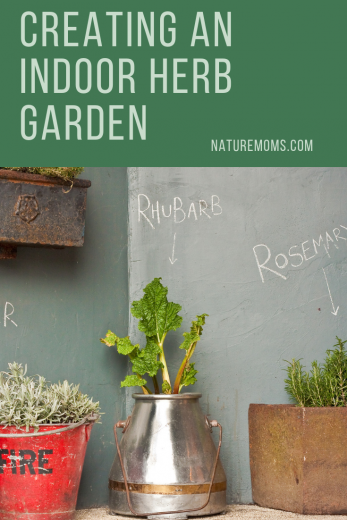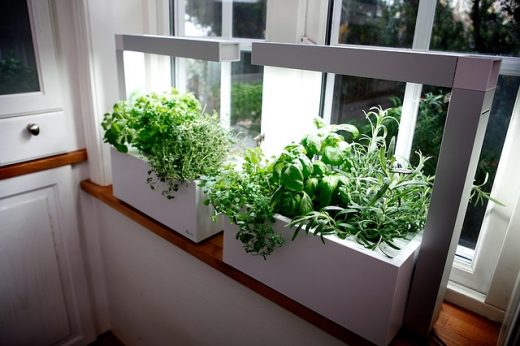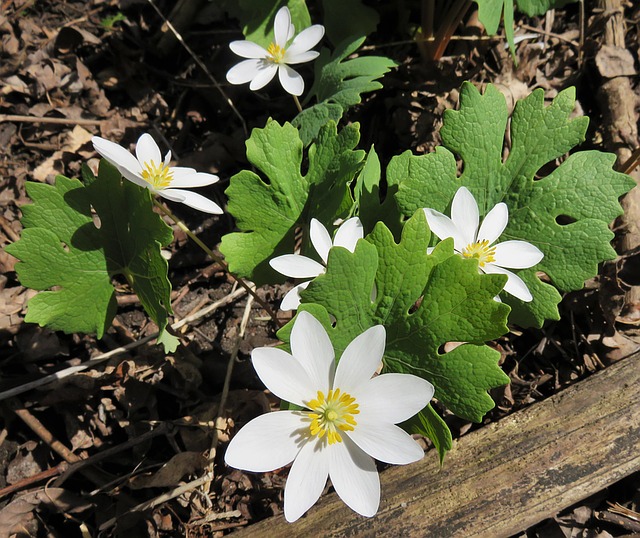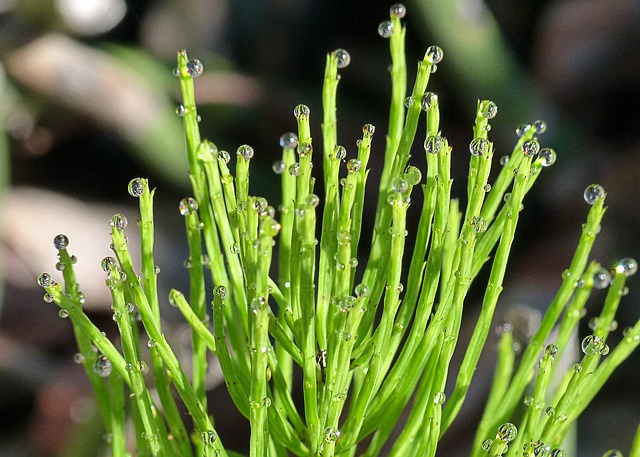 Are you planning to build your indoor herb garden? Did you know that having your indoor garden has a lot of advantages? Get to know how you can create your indoor herb garden and the benefits that you can get from them by reading the information below.
Are you planning to build your indoor herb garden? Did you know that having your indoor garden has a lot of advantages? Get to know how you can create your indoor herb garden and the benefits that you can get from them by reading the information below.
People who are a big fan of homemade meals with fresh herbs will love the comfort of having an indoor herb garden. Just a few leaves can bring out the rich flavor of the meal. If you have a window in your home that can get enough sunlight of at least 4 hours, there is every likelihood you can have the indoor garden.
There are a lot of herbs growing indoors which can improve the taste of many foods. Some of these are thyme, basil, chervil, oregano, savory, bay leaf, rosemary, chives and as well as mint.
Get to know how you can create your indoor herb garden by reading the steps below.
Choose an Area with Enough Light
You need to make sure that the planting area is receiving light. It would be best if the area can get 8 hours of artificial or direct sunlight. Some herbs that need more light, including coriander and basil, wherein they need 8 hours of sunlight each day. Otherwise, you can provide them with artificial lights by using 2 to 3 fluorescent lights to help increase yield and growth.
If you are planning to grow a wide variety of herbs, you can use a small halide light as this can cover a larger space. It will also help the herbs to grow abundantly, which can assist you with your aromatic and culinary delights.
Choosing the Right Kind of Soil
There are herbs which can grow better when they are planting in poor soil, wherein they can even develop a stronger flavor. The reason behind this is because the herbs’ oil are what makes them unique. Herbs growing rapidly are often producing leaves and stems that are plain. Therefore, it would be better using poor soil when planting herbs so they can take their time to grow and produce flavorful leaves.
Setting Up Your Containers Correctly
Always put in mind that growing plants in a container is somewhat different. You need to ensure that you are providing adequate food for the plants. To keep the growth rates in perfect control, using soil mix which are enhanced with fertilizers or water-retention crystals.
You can do this by combining a couple of part of fiber to a part of perlite, and starting adding 20% of worm casting. You also need to check the pH of the mix, if it is too acidic then adding a gram of hydrated lime to the soil would be best. When you are finished, you can add a tablespoon of a kelp meal for every gallon of soil as this will add some plant hormones which is necessary for the micro-organism.
Water Only When Necessary
Do not overwater your herbs because they prefer soil that can drain fast. You can only water them if you think that the soil is already getting dry. The containers should have holes at the bottom. You also need to add in some layers of broken tiles or any other flat stones. Some people prefer using gravel or perlite for each of their containers. Always remember that it is better to water the herbs thoroughly but not too often. You will realize the sign of overwatering once there is water coming out of the container’s bottom part.
Feed Your Herbs Right
After 10 days of planting your herbs, it is strongly advisable to start feeding them. Typically, the roots of the herbs are stuck in just one space; this means that the feed will be able to reach the roots almost immediately.
Providing Your Herbs with Extra Boost
You can provide your herbs with extra help by using liquid seaweed and a gallon of B1 plant solution. B1 is consists of root hormones and vitamins, while the seafood has growth hormones and traces of nutrients. Adding these mixtures will help in the production of the herbs’ oil.
Harvesting the Herbs
Now, once the herbs are ready, you need to collect them as soon as possible. Typically, it will take 4 to 6 weeks for the herbs to be available, but this will, of course, depend on the type of herb you are growing. If you have planted basil, then you can start harvesting it even before the flowers start to open.
Additional Tips on How to Keep Your Herbs Healthy
- When planting your herbs, do not overcrowd them. They need space so that their roots can spread out freely. It will also help them get adequate sunlight.
- The container should be big enough for the roots to avoid from struggling once they start growing.
- Lastly, you need to regularly trim your herbs to give the plants time to continue growing. You can use the herbs daily to ensure that you are cutting them the right way.
These are tips on how you can create your indoor herb garden easily. But what are the benefits that you can get from having your indoor herb garden? Let’s find out below:
Easy Access to Fresh Herbs
One of the noticeable benefits is having fresh herbs all year round. You no longer need to hurry to the store just to get a few leaves for your meal.Just wait for them to be ready so you can snap a few leaves to make your dish mouth-watering.
Be Healthy
Adding herbs to your daily diet is also ideal because it will help boost the value of vitamins in your meals. Also, since you are planting the herbs in your indoor garden, this can become excellent exercise. You have to bend, dig, and stretch. You will effortlessly kill two birds with one arrow.
Have Great Experience
You, as well as your family, can experience this planting thing together. When it comes to gardening, there will always be something new worth learning. From different techniques in gardening to new recipes with herbs; everything will surely be a great experience for the entire family.
Save Money
It can be expensive to purchase herbs in the grocery each time you want to play with the textures and flavors. There are also some herbs that are hard to find, wherein you need to go to a specialty store just to locate the herb that you need. But if you have your indoor herb garden, all you have to purchase are the seeds that you can grow and the feeds that will help maintain the plants’ health.
Relieve Stresses
Tending your herb garden indoors contribute to reducing stresses from daily life. The scent and the sight of your herbs can certainly be a great delight.
After knowing the benefits of having a indoor garden, it would be better to know more about the variety of herbs which can be grown.
Wide Variety of Herbs to Plant
There are different types of herbs, in fact, basil has more than 30 varieties. Typically some of the most exotic varieties can be expensive when purchased at the grocery or the specialty store. But if you have them in your garden you no longer have to spend any penny.
Ideal Herb Plants to Grow
Chives
One of the best types of herbs to grow are chives, which are small types of onion that can be incorporated in most dishes. This kind of herb is also known to have medicinal properties and can help repel different species of insects, such as mosquitoes, fleas, and cabbage moths. This makes chives ideal for herb gardens because it will help protect the other herbs.
Parsley
Another great herb to plant is parsley. In fact, most gardeners have this kind of herb. Parsley is a part of most dishes today, including steak, chicken, stews, and as well as potatoes. This herb does not only help your food taste good, but it can also help improve your immune system because of its antioxidant content.
Basil
If you are into Italian cuisine, then basil is a must in your garden. Basil contains antioxidant-rich volatile essential oils, which give the herb its distinct smell and taste . Another good reason for planting basil is that it can be used to manage diabetes or treat asthma because of the antiviral properties.
Rosemary
Rosemary comes from the region of Mediterranean and is used for a lot of dishes today, including pork and chicken. This drought tolerant plant grows best in somewhat dry soil so you don’t need to make much effort to water it. Rosemary also has an excellent reputation for oily skin/acne, scalp and hair care.
Thyme
No matter what recipe you have, you can easily incorporate thyme, especially the freshly picked ones. The good thing about thymes is that it can be stored for an extended period of time, which means that you can store some of the leaves for future use. You also don’t need to worry about this plant because it can tolerate drought and different climates. Lastly, it is an excellent antiseptic and can also be used as tea to help with bronchitis.
Always remember that growing your indoor herbs can be a challenge, wherein you will be experiencing some trial and error. You may sometimes over water the herbs, or you may forget to water it. But you should not get discouraged because you will eventually get the hang of it.
Everything that you need on how to create an indoor herb garden, to the benefits and the best herbs to plant are written above. All you have to do now is to put them into reality, but starting your indoor herb garden at home. Don’t forget to do the tips above for you ensure that your herb garden will become successful.
Start your indoor herb garden now for you to be able to reap the benefits that these herbs have.





